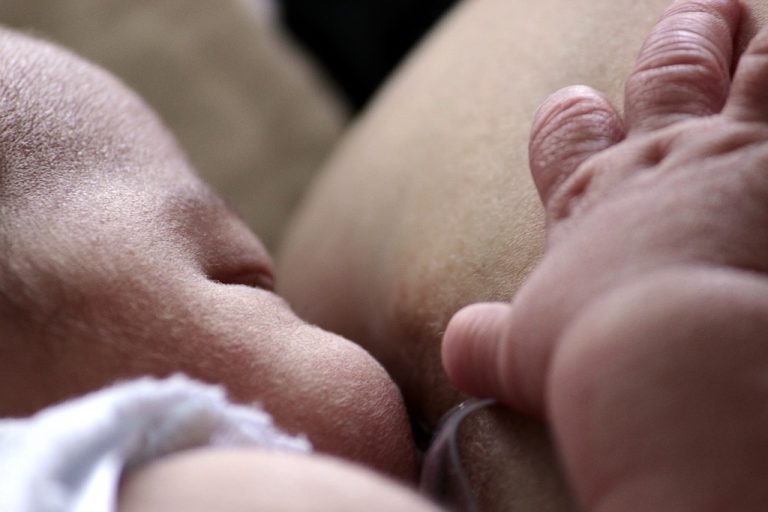SingaporeMotherhood | Baby & Toddler
October 2018
Surviving The Fourth Trimester

If you think pregnancy’s tough and labour’s a b***h, it is time to take a deep breath. What you are about to face as a new mother in the fourth trimester — the first three months of your newborn’s life — s going to be life-changing. But there are ways to sail through it. Here’s how.
So there were nine months of pregnancy, during which your body and emotions were tested to the limits. You agonised over every little symptom, cried buckets because your hormones were all out of whack, tolerated those haemorrhoids and endured a battery of prenatal tests — maybe you even re-did the OGTT (oral glucose tolerance test) because you couldn’t stomach that overly sweetened glucose drink!
Then there was the labour, which probably didn’t go quite the way you envisioned. Whether it was a normal delivery or a C-section, whether you opted for epidural or not, you deserve applause because labour is never easy. But what is surprising to many first-time mums is that the hard part is Not Over.
Hello, Fourth Trimester
“I’m Type A, so I went into overdrive preparing for pregnancy and labour,” laughs freshly minted mother-of-one Sharon Low, 28. “I stocked up on pregnancy supplies, attended antenatal workshops and practiced breathing techniques for labour. Then I imagined a smiling baby in my arms. I didn’t even know that the fourth trimester exists!”
Then she popped — and reality hit. “Once the baby was out, I felt like a lesser version of myself. The skin on my belly was loose, my boobs were leaking, and I had to hobble around because my bits were so sore,” reveals Sharon. “In fact, recovery wasn’t smooth because I popped a stitch! I couldn’t even sit without a kid-sized swimming float.”
Apart from the physical aspects of postpartum life, Sharon also had breastfeeding woes, and battled mood swings. “Breastfeeding was a lot harder than I expected, and whenever my baby didn’t latch on easily, I would burst into tears.”
So yes, the fourth trimester struggle is real. Fortunately, you are not alone, and there are ways to make things better. These tips will help you be a happy, glowing and proud mama in no time!
#1: Stock up on post-partum supplies
Ultimately, the fourth trimester is a period for healing for your body, which has gone through a sudden change from being pregnant to post-partum. Besides plenty of rest, you will probably need these post-birth supplies to tide you through!
For mummies who went through normal delivery:
- Epi-Kool Paks: These perineal pads with cooling gel are a must-have. They will numb the pain and soothe your perineum area.
- Squirt Bottle: It’s almost impossible to wipe without pain after you visit the toilet. Put a squirt bottle in the bathroom, and use it to lightly wash the area instead.
- Bottom Spray: This will also provide cool relief down under, and we love the Angel Baby Herbal Perineal Spray or Organic Perineal Balm by Earth Mama. They’re great for healing haemorrhoids too.
- Stool Softeners: Ask your gynae to prescribe stool softeners so that your first post-birth poop will be less intimidating. Or, grab a bottle of Lactus syrup from Watsons or Guardian pharmacy before you pop.
- Sitz Baths: Have your hubby or confinement lady prepare a soothing sitz bath — a shallow tub of warm water with a handful of salt — to relieve pain and inflammation.
(See also: 10 (Unglam) Postnatal Essentials every New Mum Needs)
For mummies who went through a C-section:
- Belly Binder: After a caesarean, your abdomen will be especially tender and sore for the next six to eight weeks. Get a belly binder to help support your back and the abdominal wall muscles around your wound. This will also help reduce post-operation swelling.
- Maternity Leggings and Postpartum Underwear: High-waisted maternity leggings and postpartum underwear sit several inches above your incision, so they will help you to compress your loose belly without pressing on it. Bove By Spring Maternity has some great ones.
- Co-sleeping Cot: You won’t be able to sit up easily, so if you breastfeed or simply want to be close to your baby, a co-sleeping cot is essential. The Halo Bassinest Swivel Sleeper is touted to be great for C-sect mums, because it swivels to make getting in and out of bed hassle-free. It also has a sidewall that can be lowered, meaning you can stay in bed while tending to your baby, making your recovery from childbirth a little easier.
#2 Recognise that breastfeeding has its challenges
Many first-time mums neglect the fact that breastfeeding may not come naturally to them – and end up struggling at a time when they are most vulnerable. “I’ve heard my mummy colleagues joking that breastfeeding is a full-time job,” says Tay Ju Lynn, 33. “That really hit me in the first weeks after my daughter’s birth.”
Ju Lynn adds: “It was tough figuring out the right latch, dealing with breast engorgement, battling a milk blister and constantly being worried whether my baby was drinking enough milk from me.” It took Ju Lynn some time before she figured out what worked best for her. “I discovered the Haakaa breast pump which is so simple to use! While I latched on one breast, it could fit my other breast to collect more milk.”
It’s always tougher in the beginning. We recommend reading Successful Breastfeeding: A Practical Guide by Sister Kang from Mount Alvernia Hospital. Clarify your doubts with the hospital’s lactation consultant and attend the complimentary Parentcraft sessions to learn more.
Join Breastfeeding support groups like Breastfeeding Mothers’ Support Group (Singapore) on Facebook, and keep mobile numbers of lactation consultants or postnatal massage therapists on standby – you’d never know when you will need help to relieve breast engorgement!
(See also: Top Breast Pumps for Breastfeeding Mums)
#3 Lastly, be kind to yourself
Your body has just gone through a massive change. You have been thrown into a brand new world of breastfeeding, nappy changes, and sleep deprivation. This transitional period is made even tougher as you cope with hormonal shifts – you feel blissful one minute, weepy and powerless the next.
First, recognise that these fluctuating feelings are completely normal. “I got angry easily and cried loads during my confinement month,” says Patricia Tan, 33. “At that time, I didn’t realise that my plunging hormones could take such a toll on my emotional well-being. But soon, my emotions stabilised and I found myself bonding more with my baby.”
(See also: Baby Blues: When Perinatal Depression Strikes)
Make the Fourth Trimester your Best Trimester
Be patient, don’t expect to bounce back immediately and give yourself time to heal, both physically and emotionally. With time, you will embrace – and love – your new role as a mother!
Header image: Photo by Nynne Schrøder on Unsplash
Featured image: Photo by Jeremy Paige on Unsplash
All content from this article, including images, cannot be reproduced without credits or written permission from SingaporeMotherhood.
Follow us on Facebook, Instagram, and Telegram for the latest article and promotion updates.








